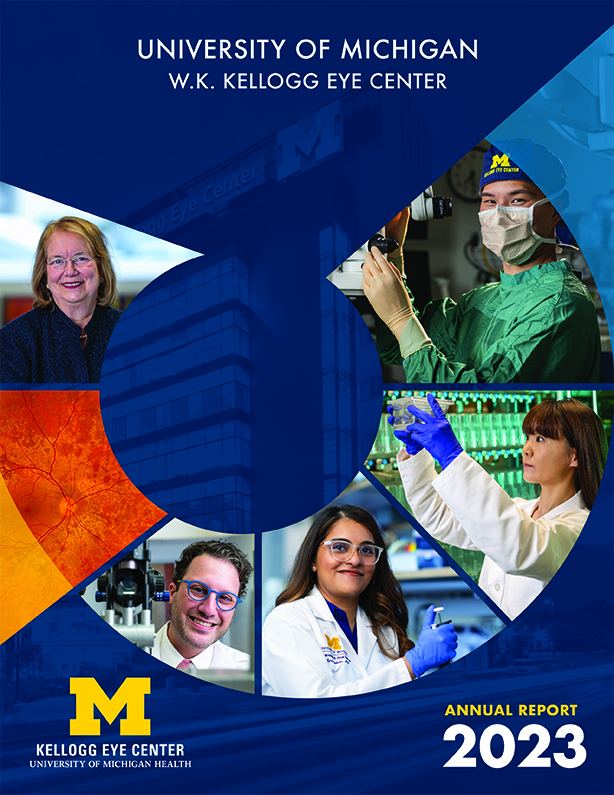
2023 U-M Kellogg Eye Center Annual Report
This report covers the period July 1, 2022 through September 30, 2023
If there’s a common theme to our 2023 report, it’s the power of teamwork. Within our center, across the University and around the globe, our faculty have cemented longstanding partnerships and forged new, sometimes surprising ones to tackle the most vexing clinical and research questions, and to prepare the next generation of leaders in ophthalmology and vision science.
Archive
- View and download the 2021-2022 Annual Report
- View and download the 2020-2021 Annual Report
- 2019-2020 U-M Kellogg Eye Center Annual Report
- 2018-2019 U-M Kellogg Eye Center Annual Report
- 2017-18 U-M Kellogg Eye Center Annual Report
- 2016-17 U-M Kellogg Eye Center Annual Report
- 2015-2016 U-M Kellogg Eye Center Annual Report
- 2014-2015 U-M Kellogg Eye Center Annual Report
- 2013-2014 U-M Kellogg Eye Center Annual Report
- 2012 - 2013 U-M Kellogg Eye Center Annual Report
- 2011 - 2012 U-M Kellogg Eye Center Annual Report
- 2010 - 2011 U-M Kellogg Eye Center Annual Report
- 2009 - 2010 U-M Kellogg Eye Center Annual Report
- 2008 - 2009 U-M Kellogg Eye Center Annual Report
- 2007 - 2008 U-M Kellogg Eye Center Annual Report
- 2006 - 2007 U-M Kellogg Eye Center Annual Report
- 2005 - 2006 U-M Kellogg Eye Center Annual Report
